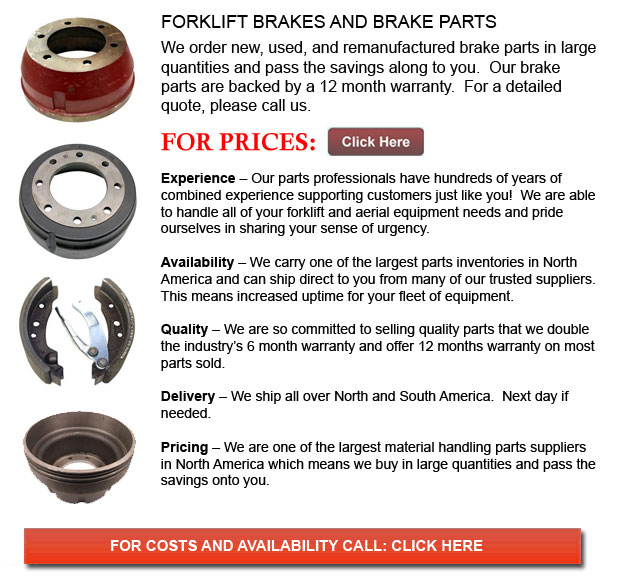
Brake for Forklift - A brake in which the friction is provided by a set of brake pads or brake shoes which press against a rotating drum shaped unit called a brake drum. There are several particular differences between brake drum types. A "brake drum" is usually the definition given whenever shoes press on the inner outside of the drum. A "clasp brake" is the term used in order to describe whenever shoes press against the outside of the drum. Another type of brake, called a "band brake" uses a flexible band or belt to wrap around the outside of the drum. Whenever the drum is pinched in between two shoes, it could be known as a "pinch brake drum." Like a standard disc brake, these kinds of brakes are somewhat rare.
Prior to nineteen ninety five, early brake drums needed constant adjustment periodically to be able to compensate for drum and shoe wear. "Low pedal" or long brake pedal travel is the dangerous outcome if adjustments are not executed satisfactorily. The vehicle could become hazardous and the brakes could become ineffective whenever low pedal is mixed with brake fade.
There are quite a few various Self-Adjusting systems utilized for braking offered today. They can be classed into two separate categories, the RAI and RAD. RAI systems are built in systems that help the device recover from overheating. The most well known RAI makers are Bosch, AP, Bendix and Lucas. The most well-known RAD systems consist of AP, Bendix, Ford recovery systems and Volkswagen, VAG.
The self adjusting brake would typically just engage when the forklift is reversing into a stop. This method of stopping is satisfactory for use whereby all wheels utilize brake drums. Disc brakes are utilized on the front wheels of motor vehicles these days. By functioning only in reverse it is less probable that the brakes would be applied while hot and the brake drums are expanded. If adjusted while hot, "dragging brakes" could happen, which increases fuel consumption and accelerates wear. A ratchet tool which becomes engaged as the hand brake is set is one more way the self adjusting brakes may work. This means is just suitable in applications where rear brake drums are used. If the parking or emergency brake actuator lever exceeds a certain amount of travel, the ratchet improvements an adjuster screw and the brake shoes move in the direction of the drum.
Placed at the bottom of the drum sits the manual adjustment knob. It could be tweaked making use of the hole on the opposite side of the wheel. You would have to go underneath the vehicle utilizing a flathead screwdriver. It is really important to be able to adjust every wheel equally and to move the click wheel properly since an unequal adjustment could pull the vehicle one side during heavy braking. The most effective way so as to ensure this tedious job is done safely is to either raise each wheel off the ground and hand spin it while measuring how much force it takes and feeling if the shoes are dragging, or give each one the same amount of manual clicks and then perform a road test.
![]() Click to Download the pdf
Click to Download the pdf
Forklift Parts
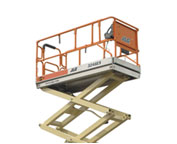
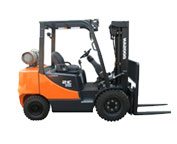
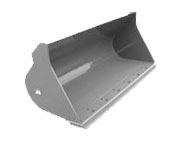
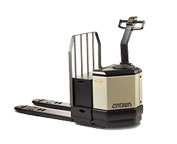
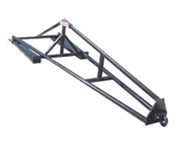
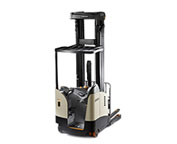
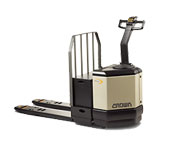
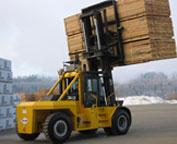
Lift Parts Express
TOLL FREE: 1-888-695-7994
forkliftpartsnewhampshire.com
Email Us
About Us


